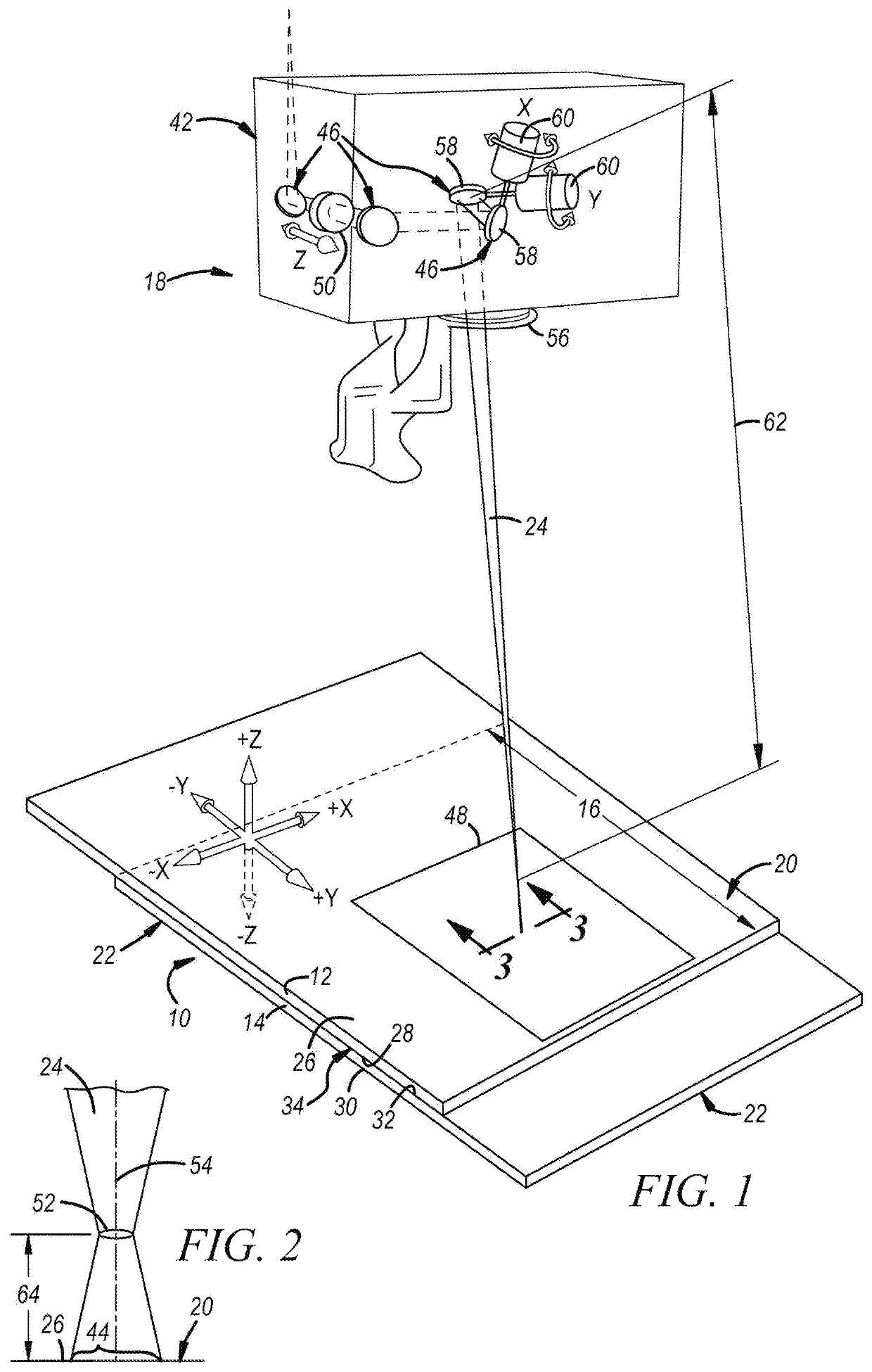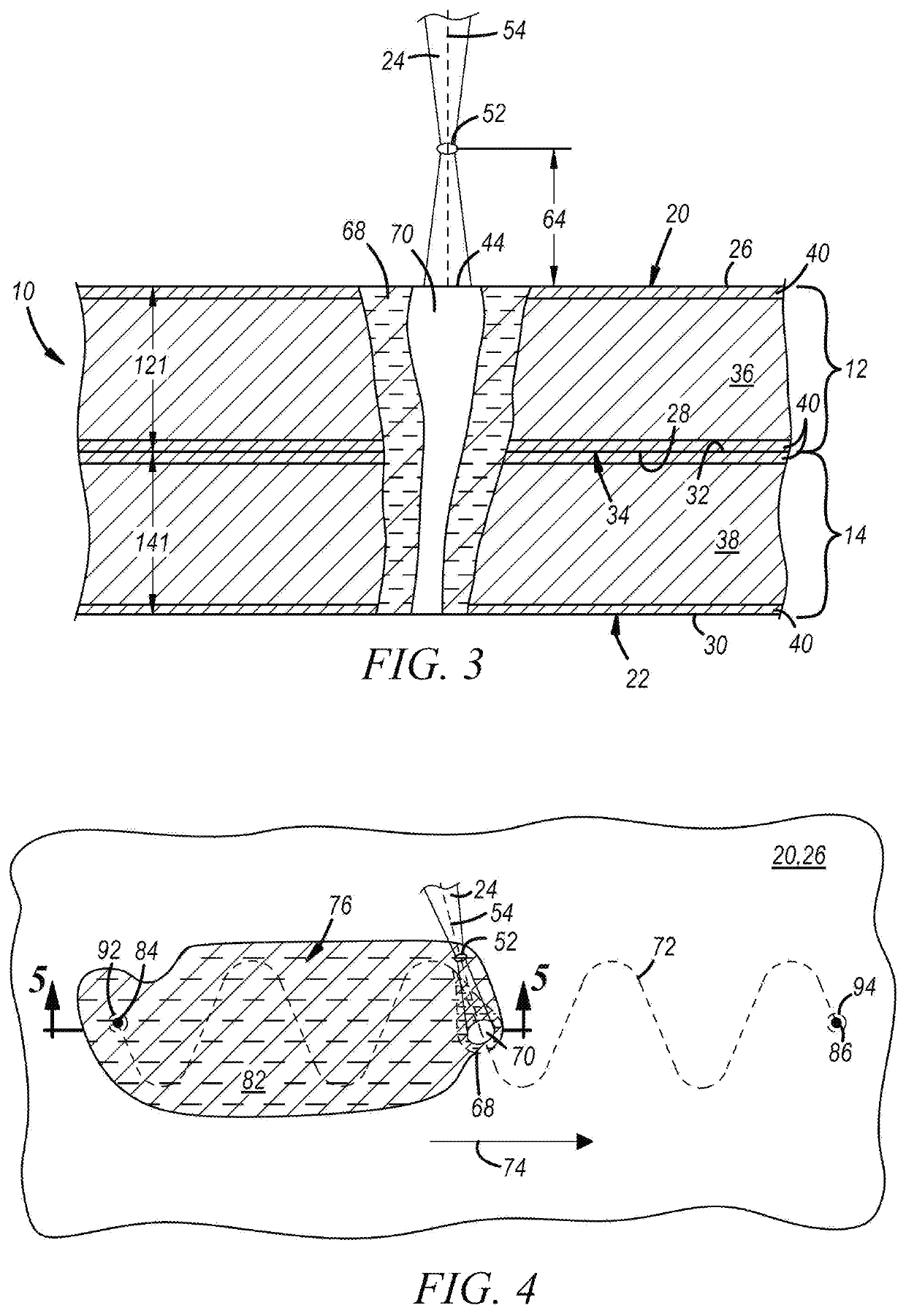Method for laser welding metal workpieces using a combination of weld paths
a technology of laser welding and metal workpieces, applied in the direction of laser beam welding apparatus, welding/soldering/cutting articles, manufacturing tools, etc., to achieve the effect of slowing down the cooling ra
- Summary
- Abstract
- Description
- Claims
- Application Information
AI Technical Summary
Benefits of technology
Problems solved by technology
Method used
Image
Examples
Embodiment Construction
[0040]The disclosed method of laser welding two or more stacked-up metal workpieces involves advancing a laser beam—and, in particular, the beam spot of the laser beam—relative to a top surface of the workpiece stack-up along multiple overlapping weld paths during formation of the final laser weld joint. Each of the multiple weld paths may serve a particular function when traced by the laser beam that contributes to the integrity and quality of the laser weld joint including, for example, initially forming penetrating molten workpiece material in the form of an elongated melt puddle, working the elongated melt puddle once it has been formed, and optionally conditioning the melt puddle and / or the solidified laser weld joint to provide the laser weld joint with a smooth top surface. By carrying out the laser welding method in this way—as opposed to advancing the laser beam once along a single beam travel pattern—the laser weld joint can be formed in a more deliberate and efficient man...
PUM
| Property | Measurement | Unit |
|---|---|---|
| Ra | aaaaa | aaaaa |
| Ra | aaaaa | aaaaa |
| melting point | aaaaa | aaaaa |
Abstract
Description
Claims
Application Information
 Login to View More
Login to View More - R&D
- Intellectual Property
- Life Sciences
- Materials
- Tech Scout
- Unparalleled Data Quality
- Higher Quality Content
- 60% Fewer Hallucinations
Browse by: Latest US Patents, China's latest patents, Technical Efficacy Thesaurus, Application Domain, Technology Topic, Popular Technical Reports.
© 2025 PatSnap. All rights reserved.Legal|Privacy policy|Modern Slavery Act Transparency Statement|Sitemap|About US| Contact US: help@patsnap.com



